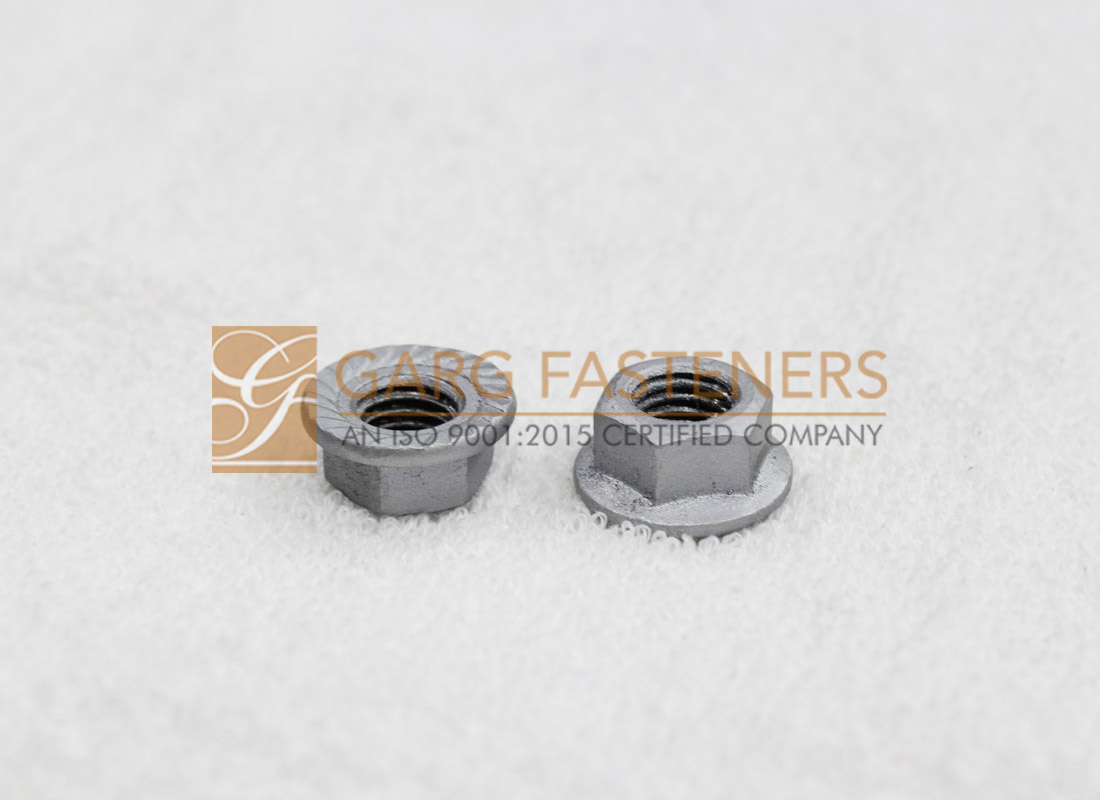Flange Nuts
Flange Nuts
Hex flange bolts are used on vehicle frames, especially truck frames, and anywhere a hex washer head bolt is needed. The large bearing surface distributes clamping force over a large area, allowing them to be used with irregular and oversized holes. Hex flange bolts are often used with Grade G Flange Style Lock Nuts to create a bolt/nut system that resists loosening and spans a wide area. They are also known as: hex frame flange bolts, hex washer frame bolts, hex flange screws. Serrated hex flange bolts have teeth under their head that grip the mating surface to resist loosening. 12 point flange bolts, also called counterbore cap screws, are used in aircraft and aftermarket automotive applications because they are easily installed using a 12 point socket and pneumatic impact wrench, while motorcycle enthusiasts like the small, externally wrenched decorative head.
Threads are standard right-hand. Hex and 12 point are available in Unified inch coarse series (UNC, Unified National Coarse) and Unified inch fine (UNF, Unified National Fine); serrated hex in Unified inch coarse. Flange bolts are partially and fully threaded depending on size and length. The point for hex types is chamfered or rounded; for 12 point, it's flat and chamfered.
Typical sizes for hex range from 3/8" to 3/4"; #10 to 1/2" for serrated hex; and 1/4" to 1" in diameter for 12 point. Lengths for hex span from about 1" to 5"; 3/8" to 2 1/2" for serrated hex; and 1/2" to 7" for 12 point. Measure length from the underhead flange bearing surface to the threaded end of the bolt.
The flange bolt should be long enough to allow at least two full threads to extend beyond the nut face after tightening, which ensures full thread engagement with the nut. Conversely, there should be two full threads exposed on the head side of the nut to make sure the nut can be properly tightened. More exposed threads within the grip (the area between the head and nut) will result in a "springier" bolt. It is also recommended that threads not be in the shear plane(s).
The size of the head varies with the size of the flange bolt; the flange diameter of hex types is over 2.1 times the bolt size whereas 12 point heads are smaller at just 1.5 times. Tables 1 and 2 list head width across flats, which is wrench size, and across corners, flange diameter and head height.
Hex serrated, Grade 5, steel, zinc plated; hex, 150,000 PSI, steel, plain finish; and 12 point, alloy steel, plain finish, are common types. 150,000 is sometimes abbreviated 150M—"M" is the Roman numeral for 1,000. You may also see 150K—"K" refers to kilo, also an abbreviation for 1,000, which is based on a French modification of the Greek word chilioi. (Plain finish is unplated so there is no surface treatment to inhibit rust.)
When selecting a nut for use with a graded flange bolt, it is very important that the nut be the same grade as the bolt; one grade higher is also acceptable as one source states. Use hardened flat washers with bolt Grades 5 and 8. As for lock washers, which are often split (helical spring) type, use regular for Grade 2 and high strength alloy steel for Grades 5 and 8.
Always follow the manufacturer's recommendations regarding bolt reuse, thread lubricants/locking compounds and torque values.
Refer to Industrial Fasteners Institute Standards IFI-111, Hex Flange Screws, and IFI-115, Flange 12-Point Screws, for specifications relating to flange bolts.
Standard : IS:6923,15581
Size : M8, M10, M12, M16


